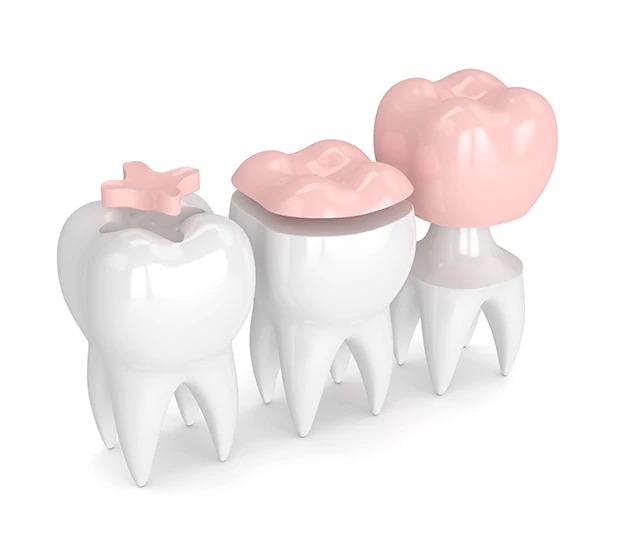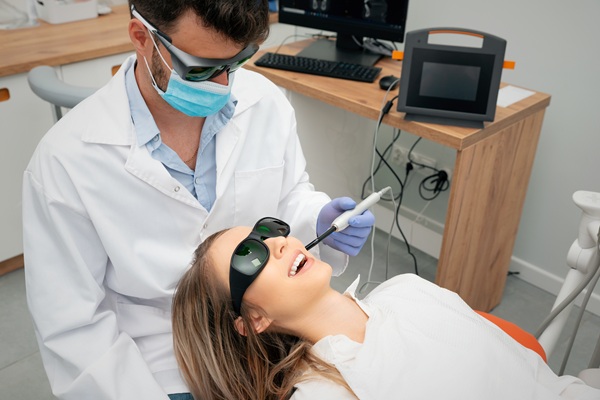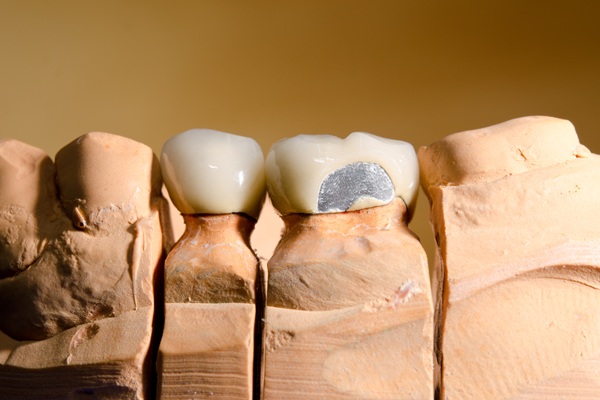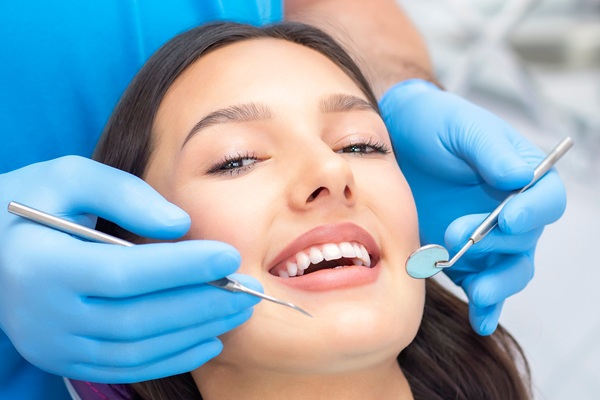Dental Inlays And OnlaysBrooklyn, NY
If you are concerned about the appearance of your old fillings, new tooth-colored treatments can restore and transform your teeth. Thanks to new cosmetic treatments such as inlays and onlays, silver and gold fillings are a thing of the past. Inlays and onlays are similar to traditional fillings as they fit inside the tooth where a cavity once was and seal it. The primary difference is that they come in various tooth-colored materials for an enhanced, more uniform smile.
As most inlay and onlay treatments replace old fillings, the cavity has already been removed and filled. This makes treatment easier, faster, and generally pain-free. Inlays and onlays provide a more sustainable treatment and a natural-looking smile.
Inlays and onlays are available at MG Dental in Brookyln and the surrounding area. Our staff can help you determine whether this treatment is right for you. Call us at {{PHONE}} to schedule an appointment.
What are Inlays and Onlays?
Inlays
Traditionally, inlays replaced a small amount of tooth structure left by a cavity, just as fillings do. They filled and sealed the tooth but were made only of gold. Inlays today are made of tooth-colored material such as ceramic, porcelain, or a specialized dental composite.
Inlays consist of tooth-colored material and bonding, a clear fluid material, to attach the inlay to the tooth. As explained by the the American College of Prosthodontists, “Using a clear fluid version of this material to seal the exposed surfaces of the teeth decreases sensitivity to temperature changes and certain types of foods.” The bonding material is also tooth-colored and may help improve the color and appearance of stained or discolored teeth.
Onlays
Onlays are similar to inlays in that they fill a missing hole caused by a cavity. However, onlays extend onto the chewing surface of a tooth to replace one or more cusps. Traditionally, they were also only made of gold, but tooth-colored onlays have made a recent appearance in dentistry. An onlay is considered a more effective option for patients with large cavities or when the decayed area expands over the top of the tooth.
The process of inlays and onlays both involve bonding material to attach and seal it to the tooth. In both treatments, the bonding material may improve the strength of the tooth.
"An onlay is considered a more effective option for patients who have large cavities or the decayed area expands over the top of the tooth."
Check out what others are saying about our Dental Inlays And Onlays services on Yelp: Dental Inlays And Onlays Brooklyn
Inlay or Filling
Inlays are a cosmetic treatment that can replace old fillings. Increasingly, patients have had the option to choose between a filling or inlay when treating a cavity. We use an impression of the cavity in question to ensure the inlay is the exact size and shape instead of other options that may weaken the tooth. In this way, the cemented inlay strengthens the tooth rather than weakening it.
As inlays have become more popular because of their appearance, fillings have become less frequently requested. However, a dentist may resort to a filling for cases in which the patient is allergic to the inlay material. In many cases, special dental material can be used as an inlay to provide the patient with the highest level of comfort.
"Inlays are formulated using an impression of the cavity and are fabricated to the exact size and shape of the cavity as opposed to being filled in."
Onlay vs. Crown
An onlay is generally used when a patient has a small hole that is only a tad larger than an inlay or old filling. In most cases, an onlay can cover the cavity hole and surrounding area. Onlays are a less aggressive restoration treatment than crowns as a smaller amount of tooth structure needs to be removed.
On the other hand, crowns are caps or covers used not to restore the function and appearance of a tooth but replace the tooth itself. According to the article oncaps and crowns, “Crowns are indicated for teeth with very large fillings, teeth that have had a root canal, fractured teeth, worn teeth due to grinding, and misshapen and/or discolored teeth.” The key distinguishing factor a dentist will use to determine the right choice for a patient is the size of the cavity.
"The key distinguishing factor a dentist will use to determine the right choice for a patient is the size of the cavity."
Benefits of Inlays and Onlays
Inlays
The key benefits of inlays lie in their durability and strength. They are intended to protect and seal the tooth from further damage using cemented material custom-fit to each tooth. The sealed inlays also protect the tooth from air and food particles, which may cause a sharp sensation. Before an inlay treatment, the dentist removes all bacteria from inside the tooth and throughout the hole, attaining a higher level of oral hygiene. Inlays are more stable and stay in the tooth for much longer than a filling with proper oral care.
Onlays
Onlays have much of the same benefits as inlays. An added benefit to onlays is they can save much of the patient’s tooth structure and provide additional strength and support for the affected tooth. Crowns require treatment and typically involve removing the entire tooth or, at minimum, much of the tooth structure. Onlays are also custom-fit for each patient and use stain-resistant material, making them last much longer without affecting appearance.
"Before an inlay treatment, the dentist removes all bacteria from inside the tooth and throughout the hole, attaining a higher level of oral hygiene."
Differences Between Inlays, Onlays, and Veneers
Veneers are customized coverings placed over the front part of the teeth. They are not meant to protect or treat the teeth and will not provide coverage against damage or decay. Before placing the veneer, the dentist shaves down most of the tooth to make room for the full tooth-sized veneer. Since veneers are irreversible, if one becomes chipped or broken, the patient will have a cracked or missing tooth until it is corrected.
Inlays and onlays do much more to save the teeth and protect against further damage with protective, specialized dental material. Once an inlay or onlay fills the tooth, the gaping hole and surrounding area are sealed, making it easier to maintain oral health and prevent future decay. Veneers are cosmetic appliances used primarily to cover up damaged and decayed teeth, much like crowns and caps.
"Veneers are customized coverings placed over the front part of the teeth."
Frequently Asked Questions
Q. Does insurance cover inlays and onlays?
A. Inlays and onlays are considered specialty cosmetic treatments. Patients should speak with their insurance provider to understand coverage regarding these treatments before initiating a consultation.
Q. Can inlays and onlays break or fall off?
A. As with fillings, poor oral hygiene and maintenance can cause an inlay or onlay to break or fall off. Although they are much more durable, patients should take the necessary measures to maintain the quality of the inlay or onlay. The dentist will instruct the patient on how to care for their teeth going forward after their treatment.
Q. Is it safe to remove all of my fillings and replace them with inlays?
A. In most cases, yes. Inlays have essentially the same function as fillings in that they “fill in” a hole left by a cavity, but they are much more durable and are tooth-colored. However, in some cases, the cavity or hole is too large and may cause bleeding, in which case the dentist will likely recommend an onlay or crown.
Q. Do inlays and onlays require additional care?
A. Inlays and onlays are long-lasting restorations and are meant to last. They do not need specific care but regular maintenance as with the rest of your teeth. Oral hygienic habits, such as proper brushing twice a day, flossing, rinsing, and regular dental check-ups and cleanings should keep your inlays and onlays intact and well-kept.
Q. Is there anything I cannot eat or drink after inlay/onlay treatment?
A. As with temporary fillings, patients should avoid sticky or hard foods that could damage or break a temporary inlay or onlay. Once the permanent is placed in, you may resume normal eating, drinking, brushing, and flossing. Inlays and onlays are made to be as close to your natural teeth as possible and should not affect your eating or drinking habits.
Questions Answered on This Page
Q. What is the difference between an inlay and an onlay?
Q. Should I get an inlay or a filling?
Q. Should I get an onlay or a crown?
Q. What are the key benefits of inlays and onlays?
Q. What are the differences between inlays, onlays, and veneers?
Learn More About Inlays and Onlays Today
If you are considering replacing your old fillings and crowns or want to schedule a consultation appointment, call us at (718) 416-6444 to speak to MG Dental. We can take full-mouth X-rays to create a custom treatment plan to help meet your needs.





